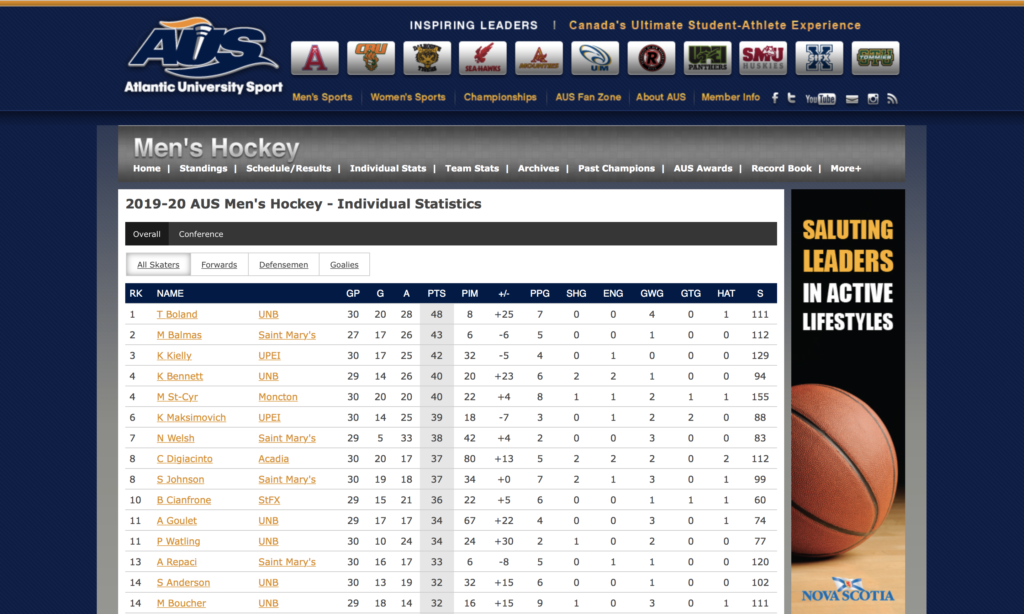Hockey Hack Day in Canada, as Ebrahim Adeeb put it, is like a mass job interview for data analysts.
It’s kind of like a sports draft combine, where athletes perform a series of physical tests in front of coaches and scouts, who use the results to evaluate prospective players.
Participants of Hockey Hack Day in Canada and similar events are trying to get into the same sports organizations — just in a different role.
EA Sports, the Vancouver Whitecaps and the Vancouver Canucks, to name a few, attended the 2017 Vancouver Sports Analytics Symposium and Hackathon (VANSASH), an analytics expo that involved the use of both soccer and hockey analytics.
Hockey Hack Day is based on the 2017 and 2018 VANSASH events and similar hackathons in Toronto. Adeeb found a job with the analytics department at Own the Podium following VANSASH 2017.
“A lot of the winners of [hackathon] events and others network with organizations. Around 10 people ended up getting jobs working in professional sports after VANSASH,” Adeeb said.
Adeeb is the Dalhousie University site’s chair for Hockey Hack Day. Three other universities will take part in the event, including the University of Ottawa, the University of Toronto and Simon Fraser University (SFU) in Vancouver.
Hockey Hack Day in Canada was slated to take place at the four universities on March 27 and 28, the first time a Canadian university sports hackathon is set to be held simultaneously in multiple places. However, it has been postponed until the fall due to the COVID-19 pandemic.
Adeeb and Dani Chu had lead roles in organizing the 2017 VANSASH event with SFU’s Sports Analytics Club. Chu has an advising role with this year’s Hockey Hack Day, as he is balancing the duty with his job in Seattle. He works there in the city’s new NHL team’s analytics department.
Chu said it’s a team effort to organize a successful hackathon.
“It’s students helping students. Our organizing committees are all students, and they want to put on a cool event for other students,” he said. “We have help from our sponsors too. It’s something that can grow at each university, each year.”
What is a Hockey Hack Day?
So, what exactly are they up to?
Game data is provided by sponsors to help participants investigate which hockey players are strong in stats like zone entries, zone exits and shot quality.
“Students will be able to dive deeper into what makes a zone entry effective, which players are the most effective at these, and will look into more of these types of questions,” Chu said.
The most common statistics used in hockey are “old school stats,” said Adeeb. These stats are goals, assists, points and plus-minus, which is based on if a player is on the ice when a goal is scored. They get a “plus” for being on the ice when their team scores, and a “minus” for getting scored on.
These stats reward players who score more, with less credit given to players who are effective elsewhere, like at getting the puck out of their own zone. For example, defensive-minded players can be punished by the plus-minus stat. Because of their role on the team, they play more often in situations where they can get scored on, so their plus-minus stat will probably be lower than that of an offensive powerhouse.
This is why advanced analytics are getting more attention lately. Adeeb said a lot of factors play into a situation, using the expected goals stat as an example.
“Factors, like the zone you’re in when you take a shot, how much coverage is on you, if it’s a high-quality or low-quality shot, you get to know that information. And it makes a lot of difference,” he said.
Adeeb also discussed the newest ways that data is collected while a game is played. A method of growing popularity is the use of the SportVU camera system, where cameras monitor player and puck locations at all times. Algorithms that relate the actions of players with other players and the puck with the help of the cameras generate an array of stats. Passes are even tracked differently, with much more detail.
“Before, you would watch a game and see Player A pass to Player B, then you would record that. Now, the computer algorithm sees ‘puck was really close to Player A, he flicked his stick to hit the puck in the direction of Player B, and Player B received it onto his stick, which counts as a pass,” Adeeb said to explain how the SportVU cameras organize data in-game.
The data for the Hockey Hack Day will be provided by hockey analytics company Stathletes. In the past, teams like the Whitecaps would provide their own data for participants to work with.
The “showcase” atmosphere in events like hack day, Chu said, communicates an important message to participants.
“We want to encourage everyone, including those otherwise pushed out of sports analytics and are told from an early age ‘this isn’t for you,’” Chu said. “We want to make this a very low-barrier event, and tell them that they are welcome and can do this.”



Recent Comments